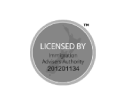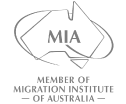Moving to a new country involves navigating a maze of unfamiliar systems, and the Australian tax system is no exception. As a new migrant, especially one with a sophisticated financial background, understanding your tax obligations is crucial for financial planning and compliance. This article cuts through the complexity, providing seven key insights to help you confidently manage your taxes in Australia.
1. Understanding Tax Residency: It’s Not Just About Your Visa
Determining your tax residency is the first and most important step. Unlike your visa status, tax residency depends on various factors, including your intention to reside in Australia permanently, your physical presence, and your connections to the country. Generally, if you’ve come to Australia to live permanently, you’re probably an Australian resident for tax purposes.
The Australian Taxation Office (ATO) provides detailed guidance to help you determine your residency status. Even if you’re not an Australian citizen or permanent resident, you can still be considered a tax resident. If you are deemed a tax resident, you’re taxed on your worldwide income, not just income earned in Australia.
2. Tax File Number (TFN): Your Key to the System
Your Tax File Number (TFN) is a unique nine-digit number issued by the ATO. It’s essential for working in Australia, accessing government services, and lodging your tax return. You should apply for a TFN as soon as you arrive in Australia. The ATO website provides instructions on how to apply for a TFN.
It’s crucial to keep your TFN secure and only provide it to your employer, financial institutions, and the ATO. Avoid sharing it with anyone else to protect yourself from identity theft and fraud.
3. Income Tax Rates: A Progressive System
Australia utilizes a progressive income tax system, meaning the more you earn, the higher the tax rate. The current income tax rates for Australian residents vary each financial year, so staying updated is essential. For the 2023-2024 financial year, the rates range from 0% to 45%, excluding the Medicare levy.
Understanding these rates is critical for forecasting your after-tax income and effectively planning your finances. Consider using a tax calculator provided by the ATO to estimate your tax liability based on your income.
4. Capital Gains Tax (CGT): Managing Your Investments
Capital Gains Tax (CGT) applies to profits made from selling assets, such as property or shares, acquired after September 20, 1985. Unlike income tax, CGT isn’t a separate tax; it’s part of your income tax. If you sell an asset for more than you paid for it, the profit (capital gain) is added to your taxable income.
However, there are CGT exemptions and discounts that can significantly reduce your tax liability. For example, if you hold an asset for more than 12 months, you may be eligible for a 50% CGT discount. Careful planning and record-keeping are essential in managing your CGT obligations, especially for investors.
5. The Medicare Levy: Contributing to Healthcare
The Medicare levy is a 2% levy on your taxable income that contributes to Australia’s universal healthcare system, Medicare. Most Australian tax residents are required to pay the Medicare levy. However, exemptions or reductions may apply depending on your income and circumstances.
If you have private health insurance, you may be eligible for a Medicare levy surcharge exemption. It’s essential to assess your eligibility for exemptions to minimize your tax burden.
6. Allowable Deductions: Reducing Your Taxable Income
One of the most effective ways to reduce your tax liability is by claiming eligible deductions. The ATO allows you to deduct expenses directly related to earning your income. These can include work-related expenses, self-education expenses, and investment property expenses.
Keeping accurate records of all your expenses is crucial. The ATO’s website offers detailed guidance on what expenses you can claim and how to substantiate them. Some popular deductions include:
- Work-related travel: Expenses incurred traveling for work.
- Home office expenses: Costs associated with working from home.
- Self-education expenses: Costs related to courses that directly improve your skills for your current employment.
7. Superannuation: Planning for Retirement
Superannuation is Australia’s retirement savings system. Employers are required to contribute a percentage of your salary (currently 11%) into a superannuation fund. This is in addition to your salary and is designed to help you save for retirement.
As a new migrant, understanding your superannuation options is vital for long-term financial planning. You can choose your own superannuation fund and make additional contributions to boost your retirement savings. The ATO provides information on superannuation and how it works.
Furthermore, under certain conditions, it’s possible to transfer eligible overseas superannuation funds into an Australian superannuation account. The rules around this are complex, so expert financial advice is critical.
Conclusion
Navigating the Australian tax system as a new migrant requires careful attention and planning. By understanding these seven key aspects – tax residency, TFN, income tax rates, CGT, Medicare levy, deductions, and superannuation – you can effectively manage your tax obligations and optimize your financial strategy in Australia. Remember to consult with a qualified tax professional for personalized advice tailored to your unique circumstances.










